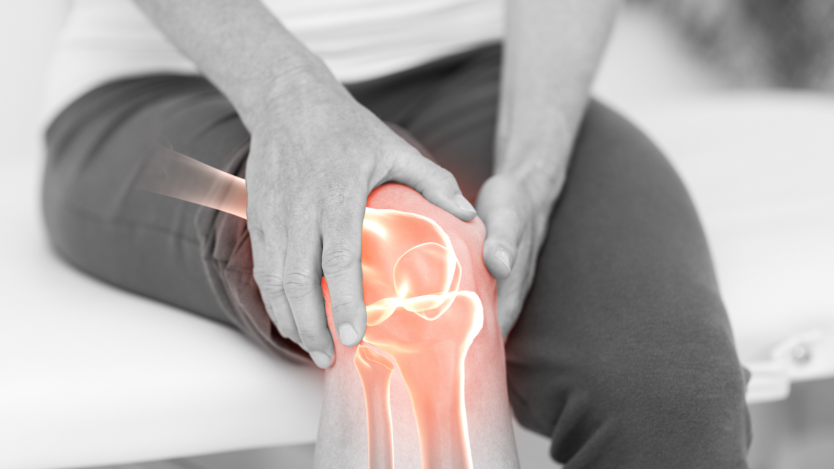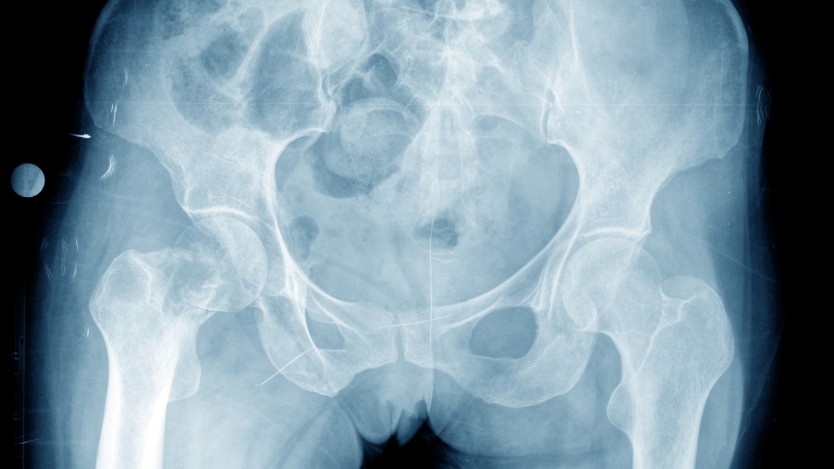How is a hip prosthesis fitted?

- What is a hip prosthesis?
- How is a hip prosthesis fitted?
- How long does the intervention last?
- Postoperative period and recovery after surgery
- Risks and complications of hip arthroplasty
- Total hip replacement surgery cost
- Bibliography
- Source information
- Frequent Questions
- Surgery to fit a hip replacement is commonly known as hip arthroplasty or hip replacement surgery.
- Placement may be partial or total, depending on the amount of joint to be replaced.
- The duration of the surgery is 1 to 2 hours, depending on the conditions of each patient.
Hip replacement surgery is a very common procedure in operating theatres. It is usually performed as a result of ageing and early detection of joint problems.
Factors related to the surgery such as the type of prosthesis, the duration of the operation, the recovery time, etc. will vary according to the conditions of each patient: age, associated diseases, type of surgery, etc.
Furthermore, hip arthroplasty is a surgery with a very low complication rate. The most serious complications, i.e. those affecting the heart, occur in only 2% of cases.
What is a hip prosthesis?
A hip replacement is a medical device that artificially replaces the hip joint when it is damaged in any way.
Young patients (under 55-60 years of age) are often concerned about how long the hip implant will last.
Well, although there is no exact estimate, it is true that there are models that have given results in 10, 25, and even 30 years.
The hip prosthesis lasts between 15 and 25 years.
The parts that make up the hip prosthesis are (in order of implantation, from the pelvis to the femur):
- Cotyle. This piece is cup-shaped and is implanted in the pelvis.
- Insert. This is the internal cap of the cup, which is the articular surface of the prosthesis.
- Femoral head. It replaces the femoral head and is fitted into the insert.
- Stem. It replaces the neck of the femur, so it is inserted into the femur to achieve a good anchorage of the prosthesis. This piece is attached to the femoral head.
Depending on the pathology for which the joint is to be replaced, the patient's age and bone quality, the specialist will implant one type of prosthesis or another.

Types of hip prosthesis
Depending on the amount of prosthesis implanted, we can classify the types of hip prostheses into two main types of surgery:
- Total hip prosthesis: all components of the joint are replaced. It consists of a stem that attaches the prosthesis to the femur; the cup that is fixed to the pelvis and the femoral head and the insert that articulate with each other.
This type of prosthesis is usually implanted in patients with joint wear or osteoarthritis.
- Partial hip replacement: replaces the femoral head, leaving the pelvis intact. It replaces the head of the femur that has been worn away by a degenerative disease or severe fracture.
How is a hip prosthesis fitted?
Before undergoing hip replacement surgery, it is necessary to carry out a preoperative study to verify that you are in good health to undergo the operation. This study consists of a blood test, an X-ray and an electrocardiogram. In some cases, additional tests related to heart health will be necessary.

After checking that everything is perfect, the hip replacement surgery will begin and will be carried out as follows:
- Once in the operating theatre, you will be given an intravenous line to administer the medicines necessary to carry out the operation and through which the anaesthetic will be injected.
- During the process, the anaesthetist will monitor your heart rate, blood pressure, breathing and the concentration of oxygen in your blood to regulate the anaesthesia and avoid any complications.
- Once you are under anaesthesia, a catheter will be inserted through the urethra.
- The surgical area will be cleaned with an antiseptic solution to prevent possible infections.
- Next, the specialist will make an incision in the hip area of approximately 20 centimetres until reaching the joint.
- Once in the joint, a cut is made in the femoral neck area and the femoral head, that is, the upper part that will be placed in the pelvis, is removed.
- Next, using special surgical instruments for this type of surgery, you will prepare the femoral canal (the inside of the bone). The prosthesis stem will be placed inside the bone.
- Depending on the type of prosthesis to be fitted (total, partial or revision) and the technique used, the specialist will place bone cement, or not, to fix the prosthesis.
- After placing the stem with the femoral head, the specialist will prepare the pelvic cavity where the femoral headwill be fitted.
- The surgeon will remove the damaged cartilage, giving the pelvic cavity the necessary shape to be able to place the prosthesis cup (an element that is added to the acetabulum of the pelvis), which will allow all types of movements to be carried out.
- Once the joint has been replaced in its entirety, the surgical incision is closed and a drain is placed in the area to extract the liquid that has remained lodged in the joint during the operation.
- Finally, a sterile dressing is applied to the area.
How long does the intervention last?
The fitting of a hip prosthesis lasts between 1 and 2 hours, depending on the type of prosthesis to be implanted and the patient's particular condition.
After the surgery, you will be taken to the recovery room, known as the awakening room, where you will stay until you recover from the effects of the anaesthesia and will be under medical supervision.
After hip replacement surgery, you will need to stay in hospital for 4 to 5 days. During these days, you are likely to feel pain, but you will have the support and medical service that will provide you with medication to make your recovery and stay as painless as possible.

Do you need hip replacement surgery in Spain?
Request a free and immediate appointment with our specialists in traumatology
Postoperative period and recovery after surgery
Recovery after hip replacement surgery is usually rapid, although it will vary depending on the characteristics of each patient: age, bone quality, associated pathologies, type of prosthesis implanted, etc.
Thus, recovery will begin during hospital admission. The medical and nursing team in charge of you will encourage you to move the joint little by little, with the aim of strengthening muscle tone.
3 days after the hip prosthesis is fitted, you will be able to walk with some support.
During your stay, you will probably receive a visit from a physiotherapist who will explain to you in detail a personalised exercise programme so that you do not lose muscle tone in the joint. The aim of all this is to reduce recovery time and ensure that the final result is as optimal as possible.

Once you are discharged from hospital, it is very important that you follow a series of post-operative guidelines:
- Wash and moisturise the surgical wound twice a day.
- Elevate your leg, whenever possible
- Wear footwear that supports the foot well
- Do not carry excess weight
- Maintain a diet rich in iron, fibre and fluids.
- Remove all items from the house that may get in the way: carpets, cables, etc.
- Sleep on your back with a pillow between your legs.
- Do not raise the operated leg without bending the knee.
- Do not cross your legs and avoid sudden movements and rotations.
- Use a bath lift to avoid excessive flexion of the joint.
- Use long-handled socks and compression stockings.
How will you walk again?
Although you will be able to get up on your own on the first day, it will not be until the third day that you will start walking with the help of crutches or a walking frame.
Therefore, one of the medical recommendations, after surgery, will be to take short walks of about 10 minutes, 3 or 4 times a day. Therefore, the medical team will urge you to walk in the corridors of the hospital.
So, little by little, and under medical supervision, you will gradually get rid of the crutches and other aids to begin another type of major rehabilitation.
Risks and complications of hip arthroplasty
The rate of complications and risks associated with hip replacement is low. In fact, serious complications such as infection of the joint occur in only 2 % of cases. Heart attacks occur much less frequently still.
However, no surgery reduces the chance of complications to zero:
- Infection. This may occur in the surgical wound or in the prosthesis. If it is a minor infection, it will be treated with antibiotics and, in the worst case, reintervention will be used.
- Blood clots. This is the most common of the rare complications. To prevent them, the specialist will prescribe medication and measures such as the use of compression stockings or certain exercises.
- Different leg length. Although it is very uncommon, after surgery you may feel some inequality in the size of your legs. This happens because the surgeon carves the bone to maximise the stability and biomechanics of the hip. However, an attempt will always be made to leave the legs at the same height.
- Dislocation. This is a complication that can arise during the first few months and occurs when the head comes out of the socket. Normally, it can be repositioned without the need for surgery. However, if the dislocation persists over time, a second surgery will be necessary.
- Loosening and wear of the prosthesis. Prostheses may loosen or wear out over time. If this causes pain, additional surgery, known as revision surgery, will be necessary.
- Other complications. Damage to blood vessels, nerves, stiffness and the risk of fracture can also occur.
Total hip replacement surgery cost
The average price of hip replacement surgery is between €9,000 and €20,000.
However, the cost of hip replacement surgery with Operarme is €9,590* (*check list of cities).
As specialists in the management of surgical services, we include, in each of our surgeries, everything necessary to make the process as safe and comfortable as possible.
What are the elements that make up the price of the surgery?
- Immediate and Free surgical assessment consultation
- Booking and use of operating theatre
- Single room with spare bed with meals and hospitality included
- Preoperative study
- Post-operative visits until medical discharge
- Medical fees (including anaesthesiologist and nursing team)
- Surgical material and instruments
- Prosthetic material from leading companies worldwide.
- Anaesthesia
- Hemotherapy-transfusions
- Free transfer service, both on the day of admission and on the day of discharge.
- Medical complications insurance (MCI) that covers all eventualities that may arise during surgery and up to 30 days after hip arthroplasty.
If you would like more information or request a free surgical assessment consultation, please call at +34 91 141 33 56, or click below to make an appointment:

Do you need hip arthroplasty in Spain?
Request a free and immediate appointment with our specialists in orthopaedic surgery
Bibliography
- Agencia de Evaluación de Tecnologías Sanitarias de Andalucía (AETSA). (2016, diciembre). Artroplastia de cadera en pacientes con artrosis. Recuperado de https://www.aetsa.org/download/publicaciones/AETSA_2017_Artroplastia_cadera_DEF.pdf
- Orthoinfo. (2012, octubre). Reemplazo total de cadera (Total Hip Replacement). Recuperado de https://orthoinfo.aaos.org/es/treatment/reemplazo-total-de-cadera-total-hip-replacement/
Dr. Antonio Rebollo Marina
Médico Asistencial en Centro Médico Caser
Nº colegiado: 282834715

Medical disclaimer: All the published content in Operarme is intended to disseminate reliable medical information to the general public, and is reviewed by healthcare professionals. In any case should this information be used to perform a diagnosis, indicate a treatment, or replace the medical assessment of a professional in a face to face consultation. Find more information in the links below:
Frequent Questions
-
How long does a hip replacement last?
Hip replacements last between 15 - 25 years. Read more
-
How much does a hip replacement cost?
Hip replacement surgery costs €9,590 with Operarme. Read more
-
What are the risks of hip surgery?
The risks and complications associated with hip surgery are: infection, blood clots, slight inequality in the size of the legs, loosening of the prosthesis, etc. However, the complication rate is very low.
-
How is a hip replacement done?
- The fitting of the hip prosthesis begins with the removal of the femoral head.
- Next, the femoral canal is prepared (inside the bone), where the stem of the prosthesis will go and can be fixed with bone cement or not.
- Next, the pelvic cavity where the artificial femoral head will fit is prepared.
- The damaged cartilage is removed and the prosthesis cup is placed, which will allow movement of the joint.
-
How long will it take me to walk again?
On the first day after hip surgery you will be able to sit up and on the third day you will be able to start walking with crutches or a walker. These techniques will be gradually abandoned as you gain stability and muscle strength.
